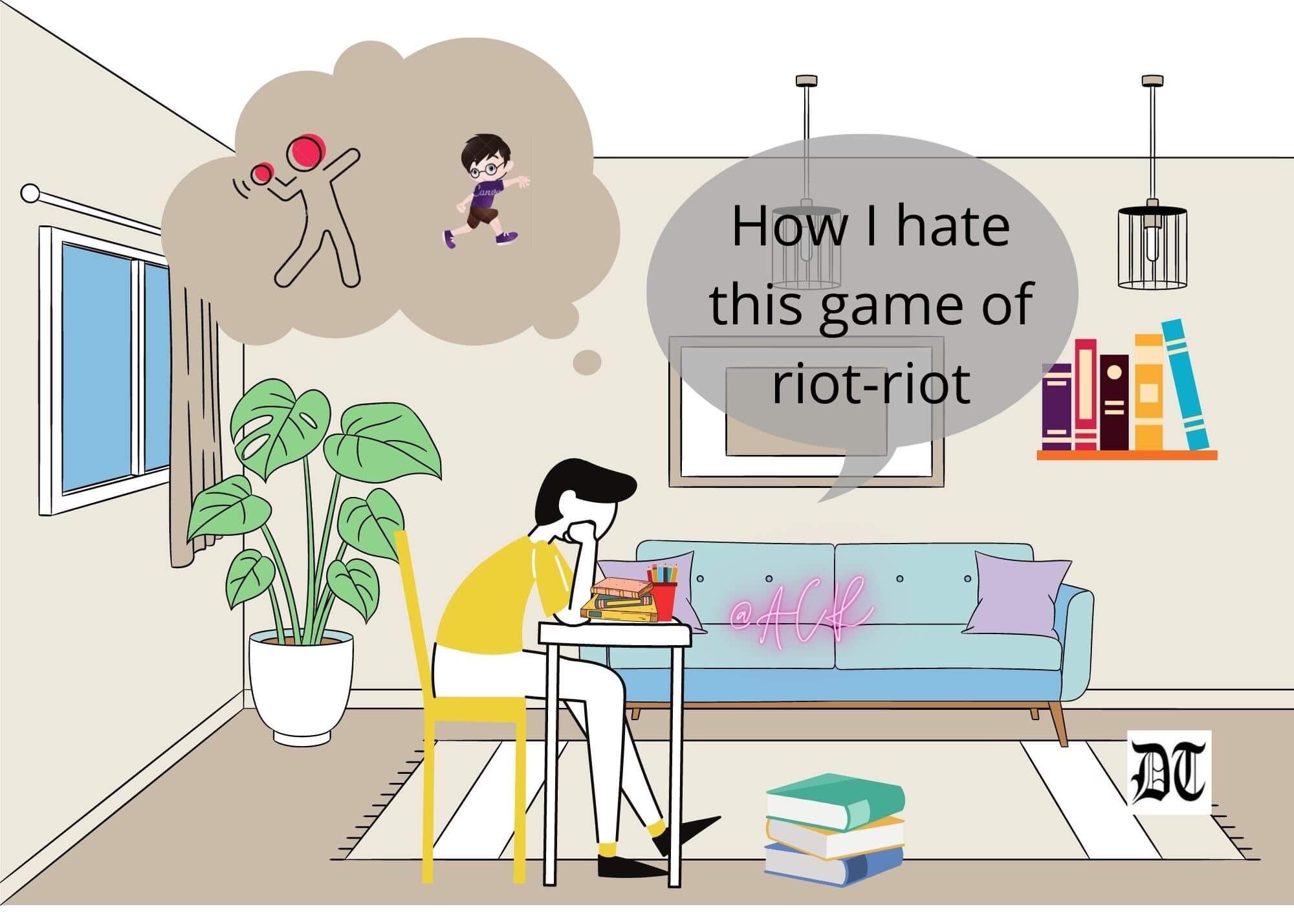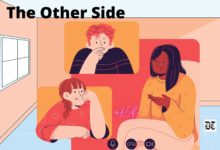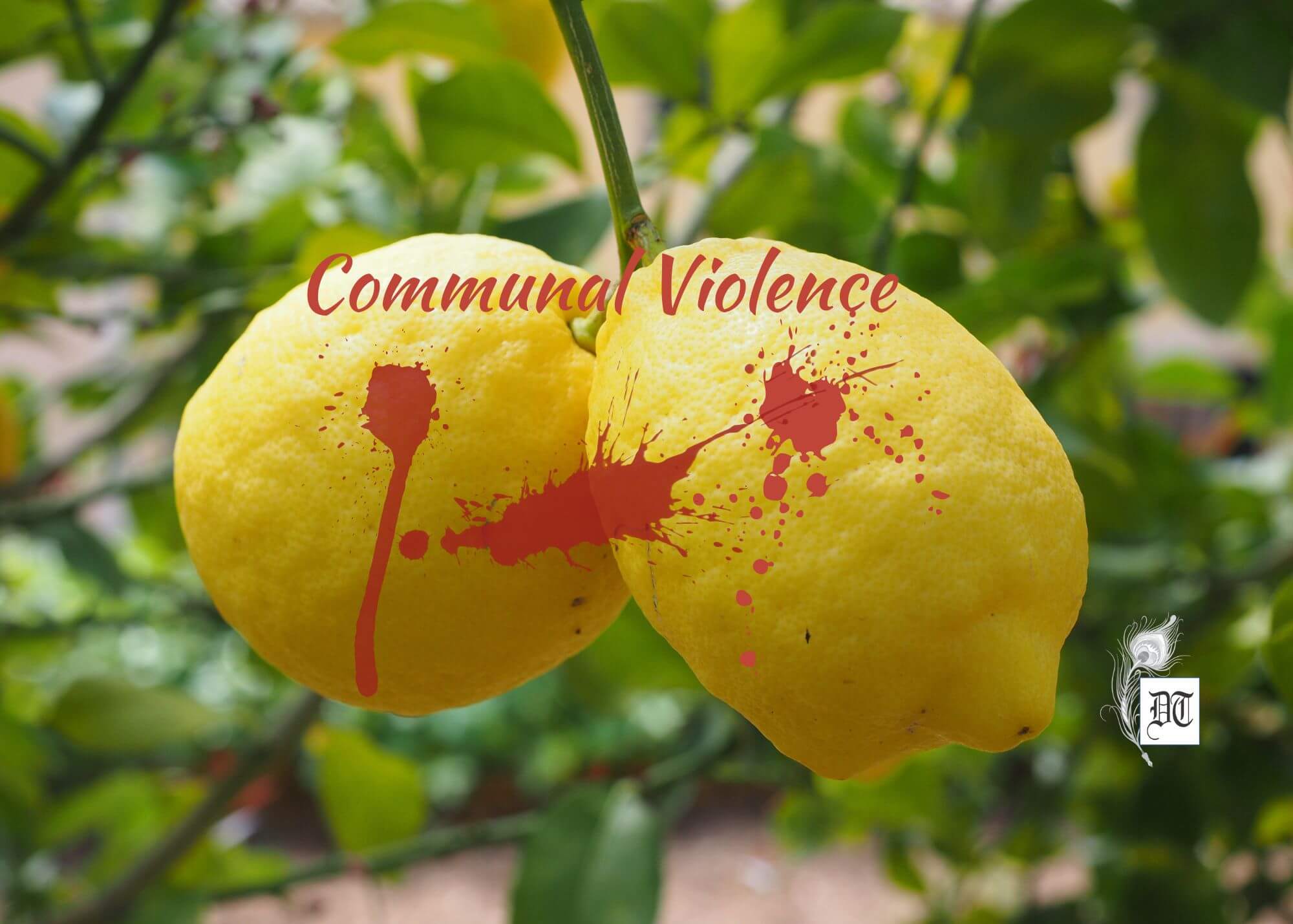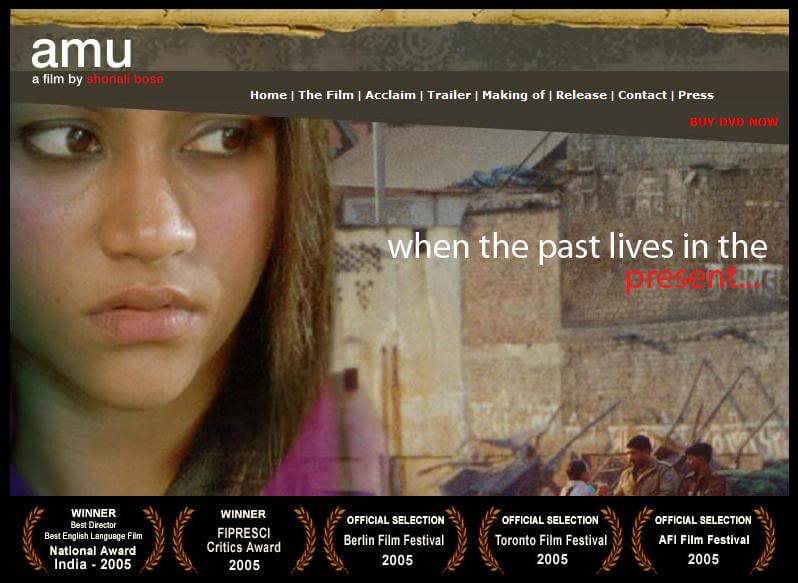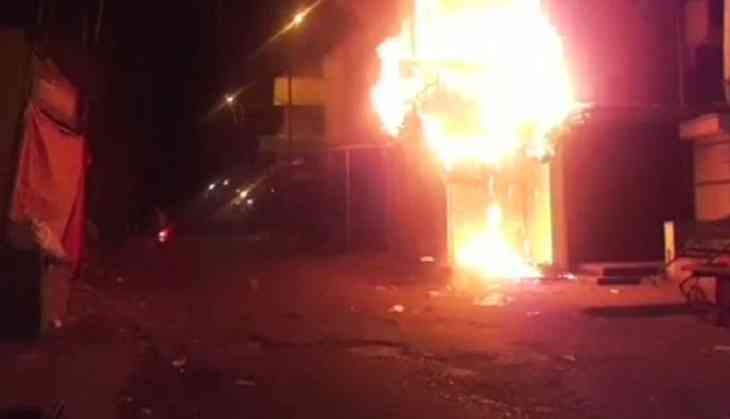A new game called riot in a boy’s school to witness actual riots in 1984, along with the reference of the partition riots, Soumya records all these, in this column. An exclusive for Different Truths.
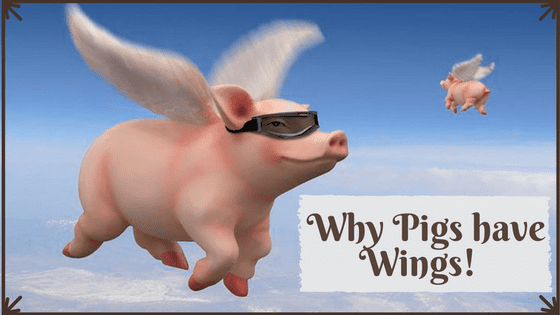
There was a new game being played in the boy’s school. It was called ‘riot-riot’. It was like Kings, or rather Bompat, which probably was a corruption of Bombard, and consisted of hitting the opponent with a rubber ball. Kings was a slightly organised version with the last one escaping declared King. Bompat had no rules. Boy hated it, as a not very athletic, skinny bespectacled bookworm, he was hit often and hard and was amongst the last to be chosen in teams. Maybe that is why he overcompensated in his youth becoming a delinquent living dangerously and in middle age taking unnecessary physical risks in trying to prove machismo.
In Riots, the only difference was that the teams were made up of Hindus and Muslims. Occasionally football was played on these lines, but kids could change sides at will, and the Christians, especially the Anglo Indians, Chinese, and Armenians, were heavily in demand by both teams being the most athletic. But this time it was merely hitting each other with the ball, every hit scoring a point. Moreover, slogans were shouted, Allah hu Akbar and Har Har Mahadeo or Jai Kali.
But let us go back to the game. In Riots, the only difference was that the teams were made up of Hindus and Muslims. Occasionally football was played on these lines, but kids could change sides at will, and the Christians, especially the Anglo Indians, Chinese, and Armenians, were heavily in demand by both teams being the most athletic. But this time it was merely hitting each other with the ball, every hit scoring a point. Moreover, slogans were shouted, Allah hu Akbar and Har Har Mahadeo or Jai Kali. The Christians spread out over both teams with individual kids choosing the team where their buddies were.
The genesis of this game was a spate of communal violence that periodically afflicts different parts of India, depending on political expediency. Bengal is usually free of this malady, since that aberration of 1947, and then too, the Bengali populace of Calcutta were not active participants, merely collateral damage. Anyway, some creative soul may have witnessed or heard of this madness, and the game was devised. This was the first time that Boy was exposed to the communal divide.
A few days later, trouble erupted in Boy’s neighbourhood. Boy’s high-rise was in an area which was declared ‘Pakistan’ during the ’47 disruptions, consisting of Havelis of rich Muslims, some of whom migrated leading to housing societies and this one high-rise cropping up, but the poor Muslims remained in a ghetto in the back streets and were the factory workers and domestic help for their better-off Hindu neighbours.
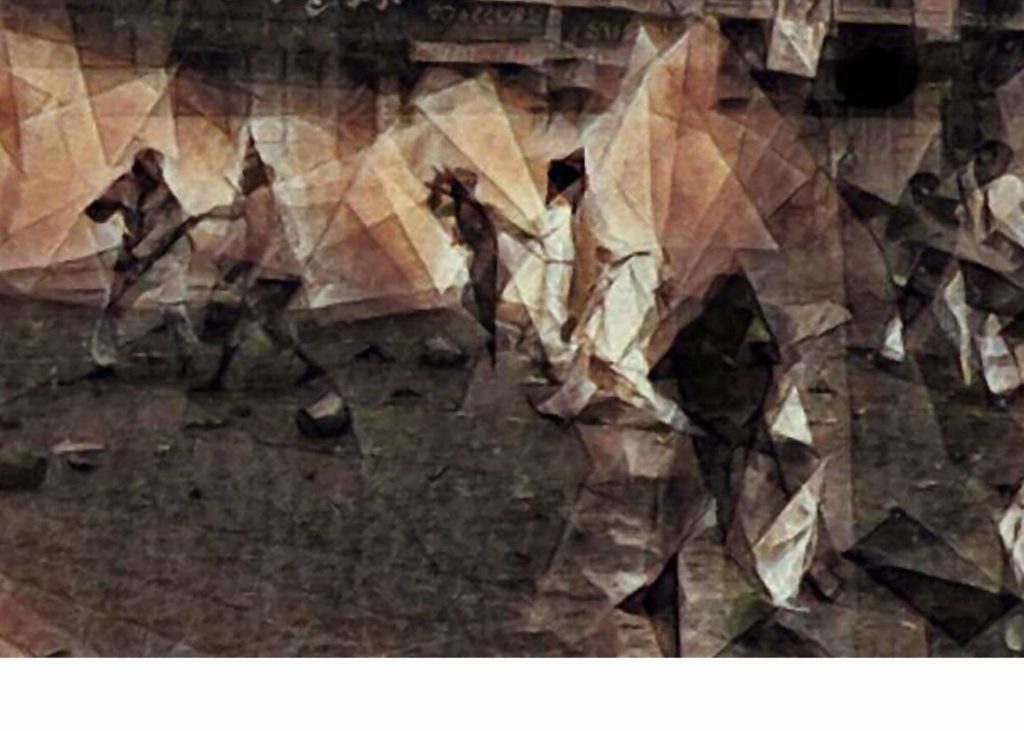
A few days later, trouble erupted in Boy’s neighbourhood. Boy’s high-rise was in an area which was declared ‘Pakistan’ during the ’47 disruptions, consisting of Havelis of rich Muslims, some of whom migrated leading to housing societies and this one high-rise cropping up, but the poor Muslims remained in a ghetto in the back streets and were the factory workers and domestic help for their better-off Hindu neighbours. Today, the battle lines were drawn between the area behind Boy’s house, and the societies in front, the road in between being no man’s land. Boy had a panoramic view of the proceedings and heard the cries learned in that game in school.
Although far away and apparently detached from the scenes of mayhem below, there was a sense of fear. He could also sense that Muslims are bad people, to be feared, they are the enemy. Boy thought of the kids in class who played in the other team and could not figure out how x y and z could be Muslims. A and B he could understand. And C, one of his major tormentors, the major force in the Hindu team, ought to be Muslim.
The police arrived. Tear gas was employed. Even high up on the balcony, the Boy had to use wet handkerchiefs to avoid irritation. Soon the Police left under a combined onslaught from both teams. Then the scary army arrived, curfew was imposed, and a deathly peace was established.
Most of what Boy witnessed was much like the game, with projectiles being exchanged, though some of them were the exploding kind, one scene traumatised him. A man on a cycle had blundered into a lane and was ambushed by a waiting mob. The body kept lying there through the day till it was removed by the army. This scene kept recurring in his nightmares.
Most of what Boy witnessed was much like the game, with projectiles being exchanged, though some of them were the exploding kind, one scene traumatised him. A man on a cycle had blundered into a lane and was ambushed by a waiting mob. The body kept lying there through the day till it was removed by the army. This scene kept recurring in his nightmares.
Years later, in Delhi, post-Babri, he witnessed a similar scene in the street near his office where he was parking his car. Boy felt sick in the stomach to see his nightmare materialising and his helplessness in being unable to do anything to prevent it. But perhaps the presence of the car saved a life, as the attackers soon ran off, and a while later, the victim got up and ran away in the other direction. Boy remained frozen, unable to move, till a police patrol car arrived.
But the Boy saw the unspeakable horror of riots and felt the terror from up close for the first time in 1984. Apparently, the ruling family had given a call for pogroms against a particular community, and the capital burnt. Boy and his friends made desperate attempts to call the police or stop the insanity in their neighbourhood, to meet dangerously hostile reactions.
But the Boy saw the unspeakable horror of riots and felt the terror from up close for the first time in 1984. Apparently, the ruling family had given a call for pogroms against a particular community, and the capital burnt. Boy and his friends made desperate attempts to call the police or stop the insanity in their neighbourhood, to meet dangerously hostile reactions. Trying to find shelter for a fleeing family proved futile, but they helped the family escape to another neighbourhood.
The rising smoke from all over the city, marauding bloodthirsty mobs, impassive policemen, buses being stopped to hunt victims, the scenes haunt him still.
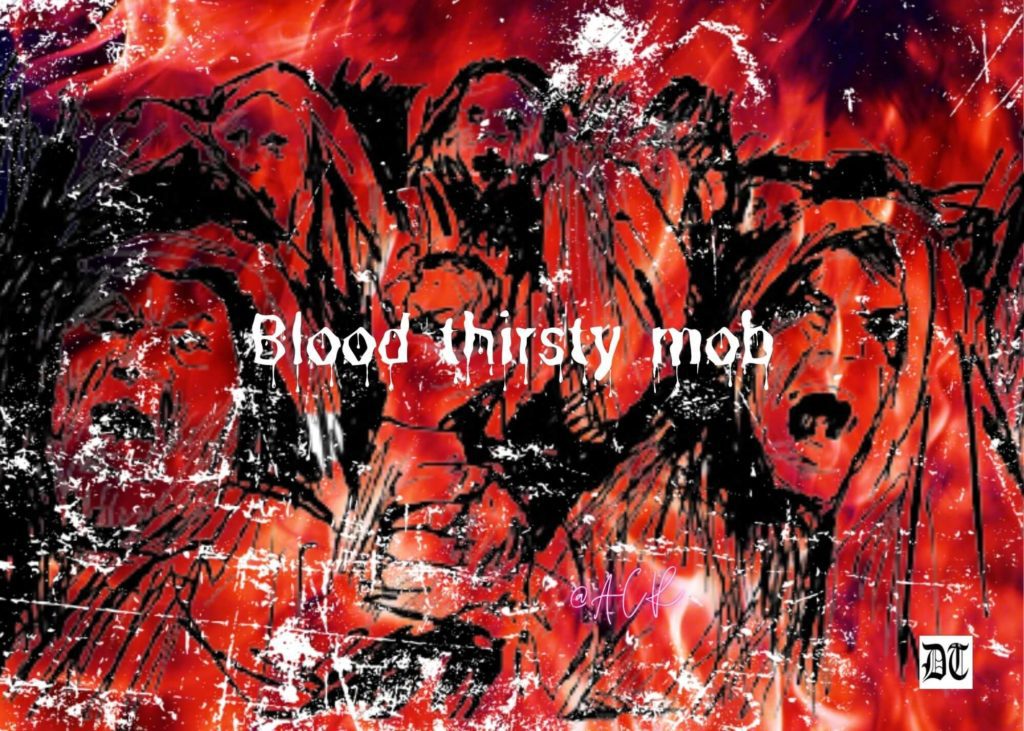
The most surreal image to stick in his mind is of a man holding a life-size baby doll from some looted shop by its legs, swinging it as he walked by, the blond frilly dressed doll looking like a real baby carcass being carried by a monster.
Boy worked with a volunteer group trying to rescue trapped families, bring relief to those taking shelter in camps, and getting information on missing family members. The scenes and stories of horror have a numbing feeling, and can neither be remembered nor spoken of, like the woman in one camp who kept staring blankly, not speaking a word.
Boy worked with a volunteer group trying to rescue trapped families, bring relief to those taking shelter in camps, and getting information on missing family members. The scenes and stories of horror have a numbing feeling, and can neither be remembered nor spoken of, like the woman in one camp who kept staring blankly, not speaking a word.
Perhaps that is one way to cope with unbelievable horror, and the reason why the survivors of the worst holocaust in our subcontinent, the survivors who left their homes in Pakistan to seek refuge in India, maintain a wall of silence, and little literature exists on any first-hand experiences.
Tragically, in 1984, many of those survivors faced another pogrom, in their country of refuge, from the very people they felt were their protectors.
Tragically, in 1984, many of those survivors faced another pogrom, in their country of refuge, from the very people they felt were their protectors.
One close friend of Boy, a member of the targeted community, came up with a remark that encapsulated the whole feeling of helplessness of the minorities.
“For the first time, I realised that we are a minority. All along I thought that minorities are those other people.”
Visuals by Different Truths

